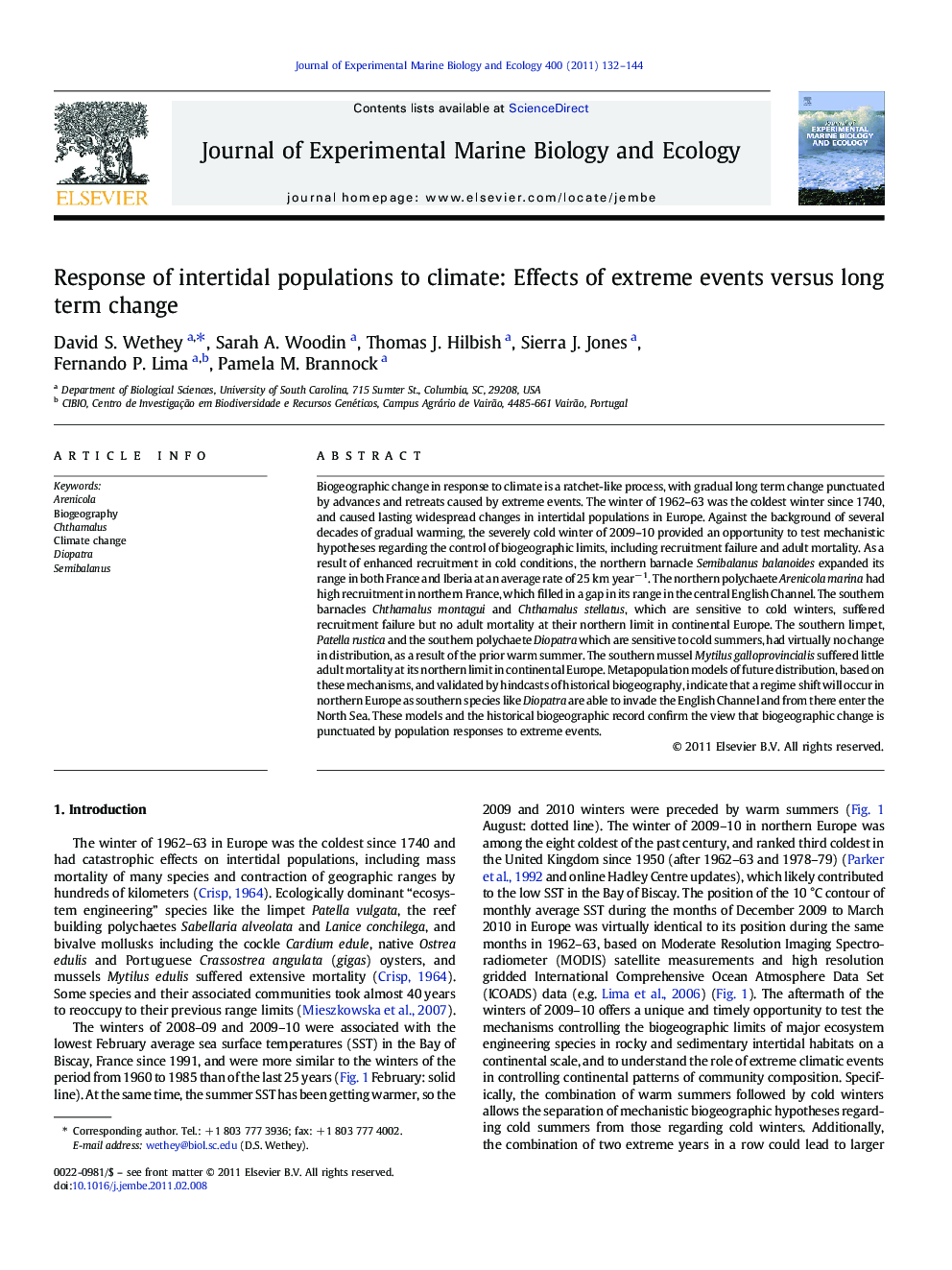| کد مقاله | کد نشریه | سال انتشار | مقاله انگلیسی | نسخه تمام متن |
|---|---|---|---|---|
| 4396342 | 1618463 | 2011 | 13 صفحه PDF | دانلود رایگان |

Biogeographic change in response to climate is a ratchet-like process, with gradual long term change punctuated by advances and retreats caused by extreme events. The winter of 1962–63 was the coldest winter since 1740, and caused lasting widespread changes in intertidal populations in Europe. Against the background of several decades of gradual warming, the severely cold winter of 2009–10 provided an opportunity to test mechanistic hypotheses regarding the control of biogeographic limits, including recruitment failure and adult mortality. As a result of enhanced recruitment in cold conditions, the northern barnacle Semibalanus balanoides expanded its range in both France and Iberia at an average rate of 25 km year− 1. The northern polychaete Arenicola marina had high recruitment in northern France, which filled in a gap in its range in the central English Channel. The southern barnacles Chthamalus montagui and Chthamalus stellatus, which are sensitive to cold winters, suffered recruitment failure but no adult mortality at their northern limit in continental Europe. The southern limpet, Patella rustica and the southern polychaete Diopatra which are sensitive to cold summers, had virtually no change in distribution, as a result of the prior warm summer. The southern mussel Mytilus galloprovincialis suffered little adult mortality at its northern limit in continental Europe. Metapopulation models of future distribution, based on these mechanisms, and validated by hindcasts of historical biogeography, indicate that a regime shift will occur in northern Europe as southern species like Diopatra are able to invade the English Channel and from there enter the North Sea. These models and the historical biogeographic record confirm the view that biogeographic change is punctuated by population responses to extreme events.
Research Highlights
► The severe winter of 2009-2010 allowed tests of biogeographic hypotheses in Europe.
► Cold winters reversed decades of northward retreat by the barnacle Semibalanus.
► Cold winters were associated with recruitment failure in the barnacle Chthamalus.
► Warm summers promoted northward expansion of the polychaete Diopatra.
► Biogeographic change is punctuated by population responses to extreme events.
Journal: Journal of Experimental Marine Biology and Ecology - Volume 400, Issues 1–2, 30 April 2011, Pages 132–144